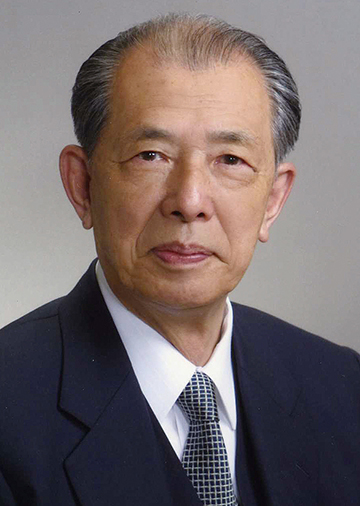

Director, Tohoku Institute of Technology Professor Emeritus, Tohoku University
Computers have been playing the leading role in the creation of today’s information society. Hard disc drive (HDD) technology, which has been particularly important for magnetic recording, is one of the key elements that constitute computers along with LSI technology. We can say that without the advance of HDD technology, the development of today’s Internet systems and Cloud computing systems would never have taken place. In the future, as we head towards an age of total digitalization, increasing the capacity of HDDs will be called for; and the perpendicular magnetic recording method developed by Prof. Shun-ichi Iwasaki is the innovative technology that makes this possible.
All conventional magnetic recording, which uses a ring-type head, employs a method by which the recording medium is magnetized in a planar. With this method, in order to simply increase the recording density of the signal on the medium, it is necessary to make the medium’s magnetic layer thin so as to prevent attenuation of the magnetization. However, this method has an essential problem-thermal instability of signal is inevitable.
By returning to and investigating the fundamentals of magnetic recording, Prof. Iwasaki succeeded in the following findings and developments: 1) he discovered that a magnetic mode perpendicular to the surface of the recording medium is effective for high-density recording; 2) he conceived the epoch-making idea that high sensitivity can be achieved, if a perpendicular magnetized film is made into a double-layered structure with an in-plane magnetization layer attached behind, and 3)he developed a perpendicular magnetic head that uses a thin magnetic membrane. In 1977 these findings and developments resulted in the realization of a perpendicular magnetic recording method for high recording density for the first time in the world. As a result of these accomplishments, he brought about a major paradigm shift from the conventional horizontal recording-for which various methods had been developed and whose life had thus been extended-to perpendicular magnetic recording.
In 2006 the world’s leading computer disc manufacturers began manufacturing HDDs that are based on a perpendicular magnetic recording method. It is said that all HDDs to be manufactured in 2010 will be of the perpendicular magnetic recording type. This new technology has thus established a firm position in the manufacturing of HDD-the main memory devices of a computer-moreover it has greatly contributed to the production technology of HDD.
Thus, through his fundamental review of conventional technology and his forward leap in thinking, Prof. Iwasaki has developed a new field of magnetic recording, and has made an incomparable contribution to the creation and development of large-capacity recording technology geared to the age of total digitalization. Prof. Iwasaki is deemed most eminently deserving of the 2010 Japan Prize given to honor contributions to "Industrial Production and Production Technology" in the field of electrical engineering and information technology.